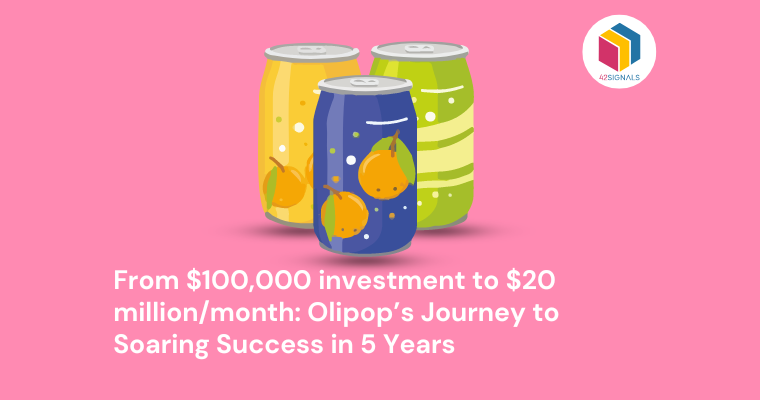Today we have many tools to understand online consumer behavior, starting from what page they landed on and how they have navigated through the website to reach the check-out page. These tools offer a lot of insights to understand consumer behavior at a macro level. Share of search analysis rose to its fame in the current e-commerce scenario for measuring the accurate purchasing intent of your customers and the demand for products that correlate to improving ROI.
So what exactly is share of search and what can you do to win more consumers? Share of search is defined by calculating the overall organic searches your brand receives in comparison to the number of searches all the other brands of the category are receiving at the time. In the era where AI and machine learning can be used to track consumer interest in making a purchase, you can gauge overall brand health too. So, when customers are searching for your brand or product, you can observe a rise in the market share as well. Read the blog further as we will deep dive into the intricacies of this model.
How Does Share of Search Help Brands?
The tools that currently exist in the market often measure the effectiveness of short-term sales and ROI. However, there’s a gap in the market to check long-term brand loyalty and the impact of advertising on purchasing intent, as rightly quoted by Steve Farella on My Telescope while addressing this issue. The kind of market we are in creates a domino effect. Where the share of search changes, so does the share of the market as well. In a situation like this, getting insights on consumer sentiment along with the share of search analysis can create a full picture of what the future of your brand might look like, against your competitors.
By analyzing data, strategists can get a better idea of how their investments might play out over time and also improve their share of searches in the market. Back in the day, the share of voice was one of the key metrics for making business decisions. However, today, online media with its exponential growth, the accuracy of consumers’ voices is diminishing and that’s where the share of search comes into the picture.
Share of Search vs Share of Voice
Share of voice largely depends on the amount of money spent on advertising. Whereas the share of search is accounted for through organic publicity via social media, websites, emailers, and videos. Both these metrics hail from one basic idea, to predict share in the market. Both ideas are differentiated by how many times the brand’s name or product is typed in Google versus how much is invested in creating ads.
Share of voice was the most sort after metric to predict the market share before the internet disrupted the media. A high share of voice across media channels like TV and radio increases brand awareness and sales. However, the impact of advertising on purchase intent is not possible anymore with the rise of online advertising.
On the other hand, the share of search can be derived from various online platforms from retail media to OTT advertising, social media channels, apps, and product listings. This information is mostly related to how many times a brand’s name is typed into the search platforms.
The Rising Need for Share of Search
Advertising is a key driver of your brand’s share of searches. With ads, more people get familiar with your brand voice, and more searches you’ll receive. TV commercials are known to have an impact on search volume, but it often turns out to be an expensive option to go with. So you can choose from other channels like influencer marketing, social media, and more to help improve your share of search in the market. There are many tools like 42Signals for analyzing the voice of customers and analyzing market share. Here are the most important use cases for having your brand analyzed against the competition.
It is easier to calculate the share of search
This metric can be used by brands of all sizes and niches. It can be accessed regularly to track brand performance. Most of this data can be pulled through Google keyword planner and other similar tools to get accurate data points. It is then compared to the overall search volume data to get interesting insights.
Including most brands while researching the competition is a good idea because it will give you maximum visibility. Get into historic data, and gather the search volumes for all the brands. You can also sort this data according to locations to get macro visibility into brand performance in your category.
It is reliable
Although the share of voice gives maximum visibility, it is a lesser-known fact that about more than 90% of consumers don’t trust TV commercials. Measuring the share of search metrics helps to get a holistic view of your consumers who are genuinely looking to engage with your brand through search platforms like Google. So this, data is simply more reliable, and accurate.
This applies to companies across industries like D2C, B2B, and B2C. Retail analytics companies like 42Signals help you to sort product performance data without having to spend a lot on getting a market analysis report. Since digital advertising is growing at warp speed, the share of voice is gradually becoming irrelevant.
Conclusion
Share of voice and share of search often go hand in hand. SOV sits on the top of the tunnel where ads are poured in and the SOS sits at the bottom of the tunnel for observing consumer behaviors and shifts in the market. Measure how many people are looking for your product online and by keeping in mind the salience of your product. Share of search is becoming the star of marketing and a very useful metric to keep a track of in the near future.





